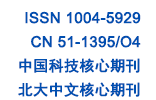 Abstract
Abstract (
)
 Download PDF
Download PDF (
)
 Knowledge map
Knowledge map
 Save
Save
In order to study the influence of gold nanoparticles with different concentrations in ZnO/Au composite film on Surface-Enhanced Raman Scattering (SERS), Au nanoparticles were deposited on ZnO film as an active substrate to form ZnO/Au composite film by photoreduction reaction, so on to realize the fabrication of SERS substrate. The properties of the samples were characterized by X-ray diffraction (XRD), scanning electron microscope (SEM) and EDS elemental analysis, we find that the prepared ZnO films are uniformly densely coated on the glass substrates and the gold nanoparticles are successfully deposited on the ZnO surface. The thickness of the ZnO film was measured by a Step Profiler to be 50 nm. Low concentration Rhodamine B (10-9 M) is used as the probe molecule and we change the concentration of Au nanoparticles for SERS test. The results show that ZnO/Au composite film has good Raman enhancement effect, and we find that the distinct characteristic peaks of Rhodamine B are at positions 620 cm-1, 1282 cm-1, 1355 cm-1, 1502 cm-1, and 1646 cm-1. Comparing the SERS enhanced effect of gold nanoparticles with different concentrations in ZnO/Au composite film on detecting rhodamine B, it is found that the Raman activity enhancement effect is the best at the 3 g·L-1 concentration.


